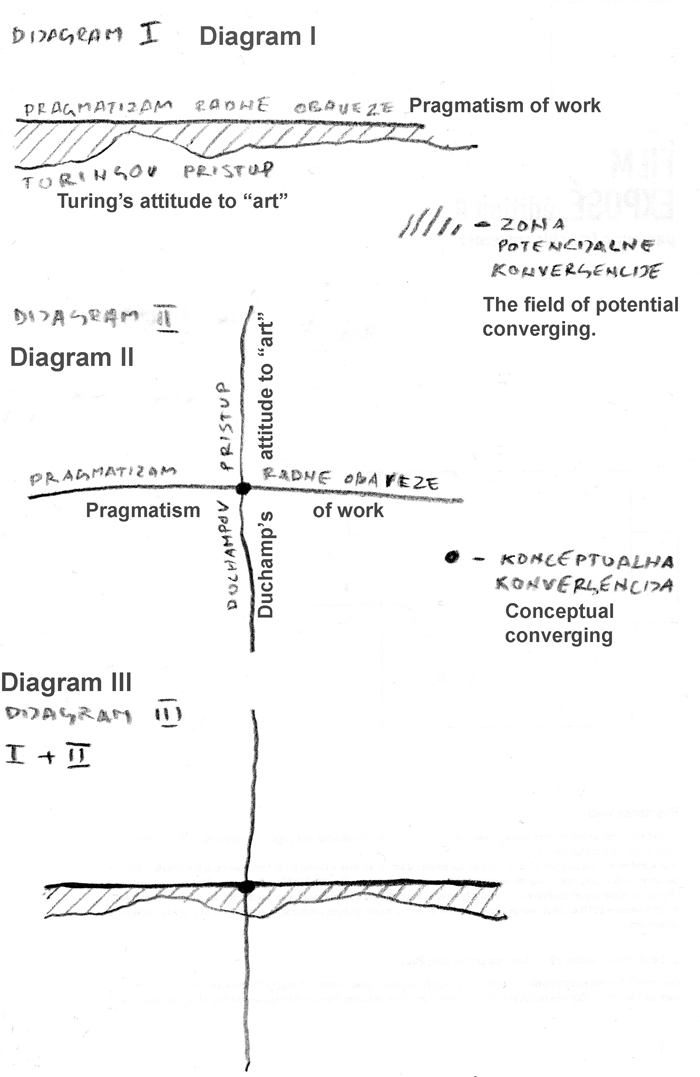I admit that the performative series under the name “The Big Machine Art” from the author Miroslav
Stakić, represents a complete cognitive challenge for me, in the sense of understanding the cause and
methods used by the author. Then again, even if I happened to think of a more consistent and intricate
semantic web, a problem would arise of which medium to use in order to represent such a mental
interpretation to the audience, making sure that it is concise and referring to potentially “objective”
values of Miroslav’s performative act, in the process. On that account, with a textual interpretation, I
hereby offer several diagrams which I used as assisting means together with this critical text.
Lev Manovich’s text from 1996 The Death of Computer Art[1]
, even though its title seemed remote
from what Miroslav deals with, compares and elaborates on the two distinctive fascinations present in
the art, which are so obviously realized in The Big Machine Art, and those would be “Turing’s
technologically-glorificational method” and “Duchamp’s literary-contextual principle”.
Diagram I illustrates the field of potential converging between the “pragmatism of work”[2]
and Turing’s attitude to “art[3]
”. It’s about a situation when a machine at work (an excavator, in this case) is
taken rather seriously with its technological attributes and purposes and is perceptible through its
functionality.
Diagram II illustrates the absence of converging field in the case of manufacturer’s planned purpose of the machine[4] which Miroslav used, with the literary-contextual nature in performance.[5]
Diagram III represents an attempt to project the first diagram onto the second, that is, reaching a
conclusion by visualization. In essence, the series of performances Miroslav did with an excavator,
drawing the faces of men, is a challenging articulation or the attempt to converge Turing and
Duchamp’s ground in relation to the pragmatism of work which, in banal visual sense of Diagram III,
is more attached to Turing’s ground but wouldn’t have any vertical, conceptual sense without
Duchamp’s principle.
Mladen Bundalo (translated by Vedran Cvijanović)
1 MANOVICH, Lev. The Death of Computer Art. 1996. http://rhizome.org/discuss/view/28877/ [reviewed: 15.02.2011.]
2 Formal working efficiency, Miroslav works with an excavator during the highway’s construction from Banja Luka to
Gradiška.
3 The demonstration of precision and control of the machine which the performance demands.
4 Mechanization and the acceleration of construction jobs.
5 Poetization of machines, socially motivated deconstruction, powerful symbolization of the object, fueled by the
importance that an excavator implies within Miroslav everyday life.
